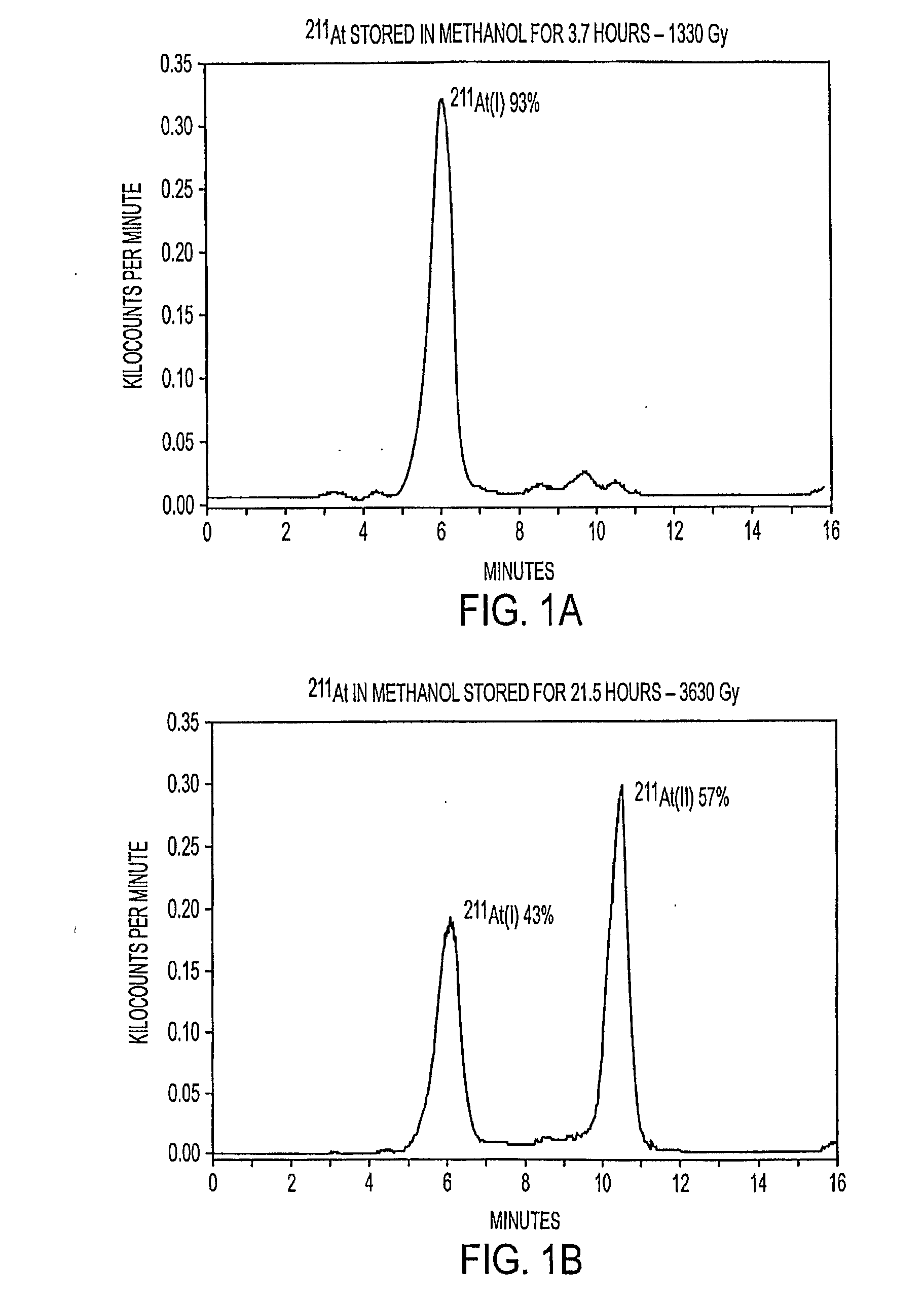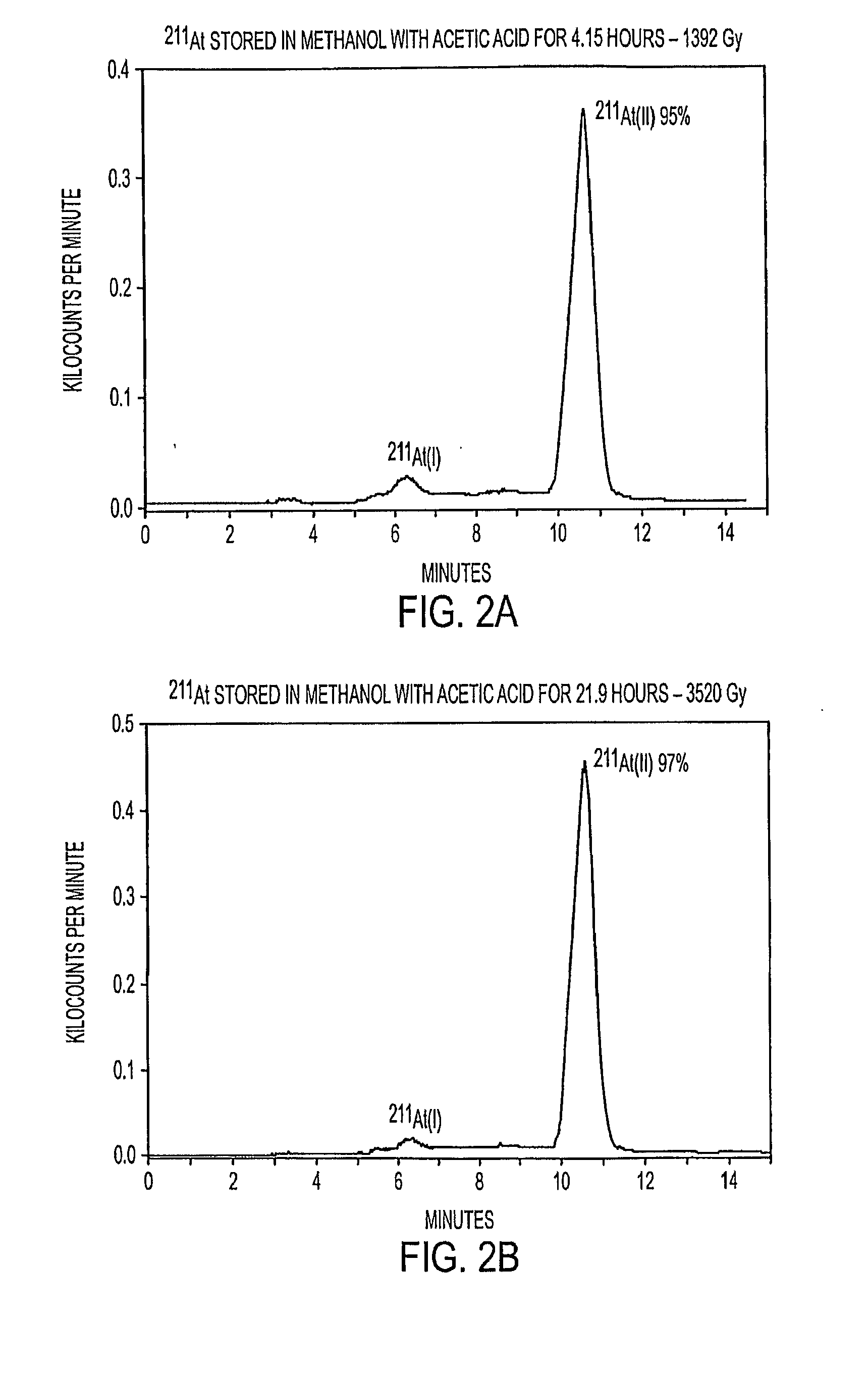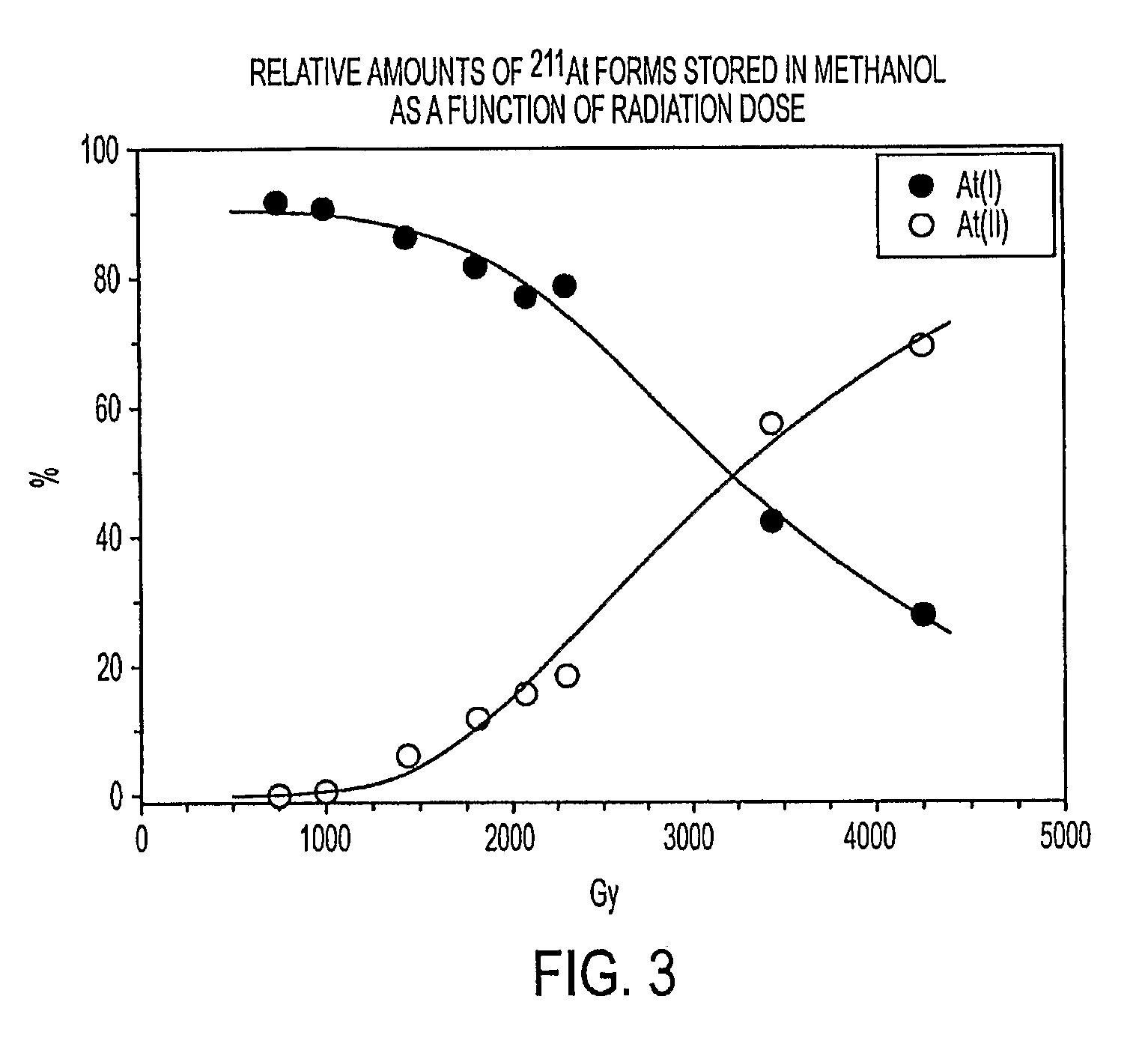Stabilized Compositions and Methods for Radiolabeling Pharmaceuticals with Alpha-Particle Emitters
a technology of alpha-particle emitters and compositions, which is applied in the direction of drug compositions, diagnostic recording/measuring, therapy, etc., can solve the problems of cumulative radiation dose of -particles that is detrimental to the labeling chemistry, and the potential benefits of 211/sup>at therapy have not been realized, so as to improve the yield of subsequent reactions, reduce the risk of contamination, and reduce the effect of radiation dos
- Summary
- Abstract
- Description
- Claims
- Application Information
AI Technical Summary
Benefits of technology
Problems solved by technology
Method used
Image
Examples
example 1
Generation of Two Forms of the α-Particle Emitter, 211At in Methanol
[0085]A sample of 211At was prepared by cyclotron bombardment of 209Bi, volatilized from this target, and eluted in methanol. The sample was divided into two separate vials. The vials were then stored for periods of 3.7 and 21.5 hours, in order to evaluate the effect of the different resulting radiation doses on the form of the 211At. After these storage periods, which resulted in calculated radiation doses to the methanol of 1,330 Gy and 3,630 Gy, respectively, HPLC analyses were performed on aliquots from the two vials. The chromatograms are shown in FIG. 1.
[0086]At the higher radiation dose after 21.5 hours, the 211At radioactivity was divided essentially between two peaks (i.e., two different forms of astatine), referred to hereinafter as At(I) and At(II). The first peak (observed at the lower retention time) corresponded to that observed for freshly-prepared 211At. As discussed below, this form, At(I), was foun...
example 2
The Effect of pH on the Relative Amounts of 211At Forms Generated
[0087]Two additional vials of 211At in methanol were prepared from the same 211At synthesis in Example 1. These vials were likewise stored for 4.15 and 21.9 hours prior to HPLC analysis, such that the calculated radiation doses to the methanol were 1,392 Gy and 3,520 Gy, respectively. The pH of the solution was significantly lowered during the storage period, however, using acetic acid. HPLC analyses were performed on aliquots from the two vials, and the chromatograms are shown in FIG. 2.
[0088]Even at the relatively low dose of 1,392 Gy, the reduction in pH of the solution, due to the presence of acetic acid, resulted in essentially all of the astatine being converted to the At(II) form (observed at the higher retention time). This conclusion was based on a comparison between HPLC chromatogram peaks in Example 2, relative to those in Example 1 where the 211At was stored in solution at neutral pH. It was believed that l...
example 3
The Effect of Radiation Dose on the Relative Amounts of 211At Forms Generated
[0089]A 211At solution in methanol was prepared as in Example 1. Aliquots taken at successive time periods, corresponding to increasing calculated alpha-particle radiation dose levels, were analyzed using HPLC. FIG. 3 shows the relationship between the amounts of the astatine forms At(I) and At(II) forms generated, as a function of radiation dose. The 211At form clearly depended on the amount of radiation received by the methanol.
[0090]It was believed that the conversion from At(I) to At(II) resulted from the radiolytic generation of reducing species in the methanol, and that the At(II) form of astatine observed at the longer HPLC retention time was a reduced form of astatine.
PUM
| Property | Measurement | Unit |
|---|---|---|
| Fraction | aaaaa | aaaaa |
| Time | aaaaa | aaaaa |
| Mass | aaaaa | aaaaa |
Abstract
Description
Claims
Application Information
 Login to View More
Login to View More - R&D
- Intellectual Property
- Life Sciences
- Materials
- Tech Scout
- Unparalleled Data Quality
- Higher Quality Content
- 60% Fewer Hallucinations
Browse by: Latest US Patents, China's latest patents, Technical Efficacy Thesaurus, Application Domain, Technology Topic, Popular Technical Reports.
© 2025 PatSnap. All rights reserved.Legal|Privacy policy|Modern Slavery Act Transparency Statement|Sitemap|About US| Contact US: help@patsnap.com



